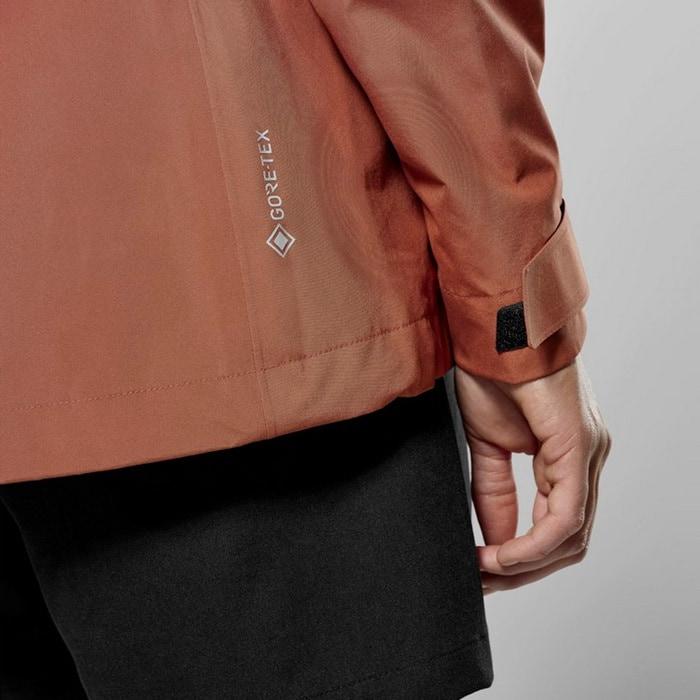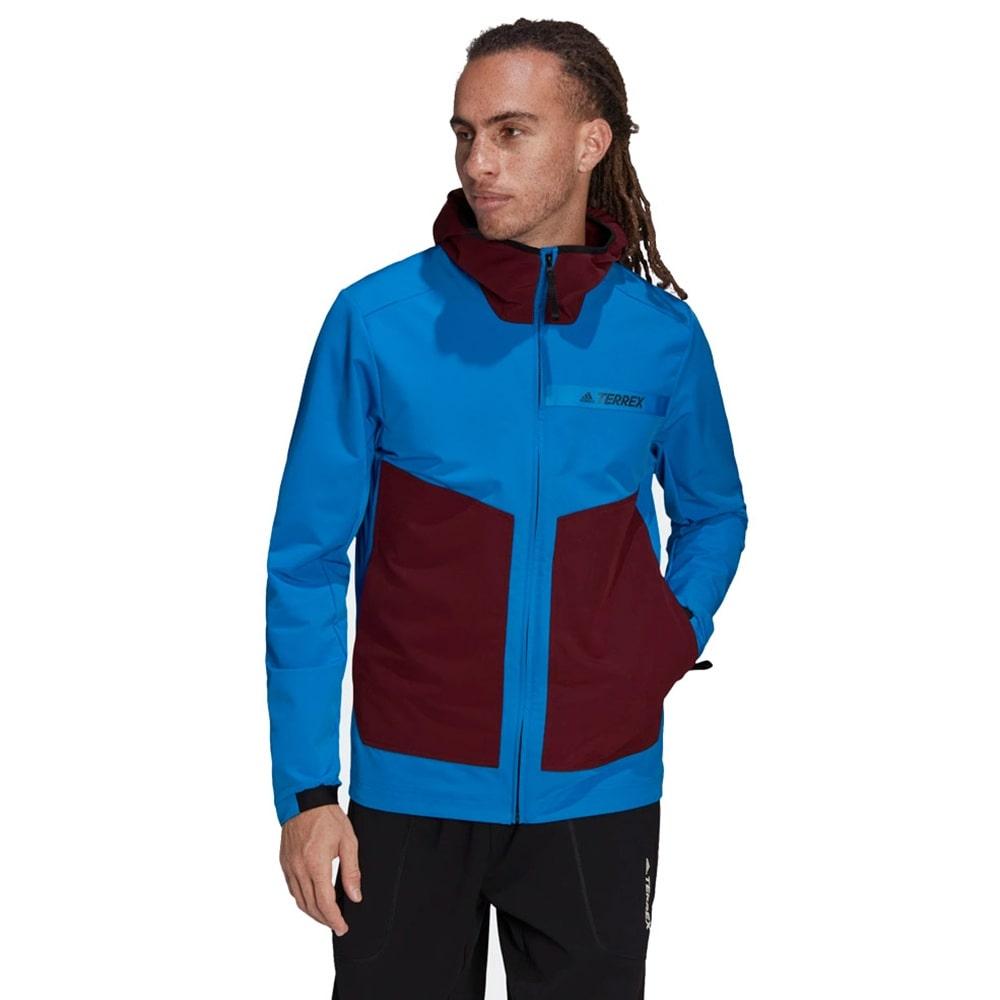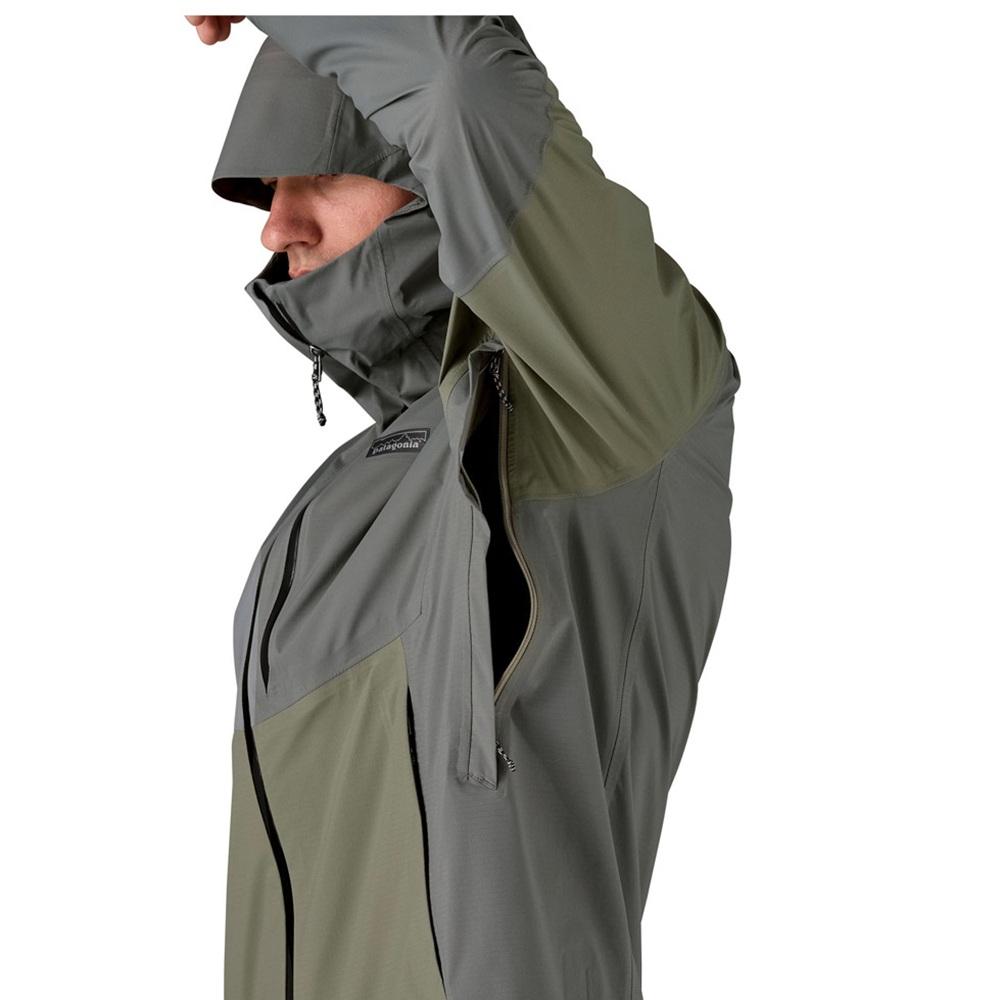
When going on a hike, it is essential to have the right gear to handle unpredictable weather conditions. A jacket is a key piece of hiking clothing, providing protection against rain, wind, and cold while ensuring good moisture wicking. But with so many models available, how do you choose the right jacket for your needs? From waterproof jackets and water-repellent options to softshells, insulated jackets, and hybrid models, each type serves a specific purpose.
In this comprehensive guide, we will explore the essential criteria to consider, the various technologies used, and how to choose the right jacket based on weather conditions and the type of hiking you plan to do.
Quick Summary: Which Hiking Jacket Should You Choose?
Looking for a suitable hiking jacket? Here are the key points to remember:
- In hot weather or during intense physical activity: opt for a lightweight, breathable softshell jacket.
- In continuous rain or snow: go for a waterproof hardshell jacket (e.g. Gore-Tex, 20,000 mm).
- In cold and dry weather: choose a down or synthetic insulated jacket.
- For a multi-day trek: prioritise a lightweight, packable and durable jacket.
- In shoulder-season or when the weather is unpredictable: a hybrid jacket is ideal for combining warmth, breathability, and protection.
Contents
- What Type of Jacket Do I Need for Hiking or Trekking, and Why?
- Essential Criteria to Consider
- The Different Types of Hiking Jackets
- Which Is the Best Jacket for Each Type of Hike?
- Summer Hiking and Hot Weather: Which Jacket Should You Choose?
- Winter Hiking and Harsh Conditions: The Importance of the Three-Layer System
- Mountain Hiking and High Altitude: Prepare for Extreme Conditions
- Day Hike vs Multi-Day Trekking
- Which Jacket for Which Situation?
- Key Points to Remember
- FAQ – Frequently Asked Questions
- Men’s and Women’s Jackets for a Perfect Fit
What Type of Jacket Do I Need for Hiking or Trekking, and Why?
The choice of a hiking jacket primarily depends on the conditions you will be facing. A simple summer hike on open trails does not require the same gear as a high-altitude trek, where the elements can be particularly harsh. Several factors need to be considered:
- The weather: rain, wind, high or low temperatures, and humidity levels.
- The intensity of the activity: a short, leisurely hike and a demanding climb require jackets with different properties.
- The duration of the outing: a day hike does not necessarily require the same level of protection as a multi-day trek.
- The type of terrain: whether in forests, mountains, or plains, exposure to the elements can vary.
A good hiking jacket should regulate body temperature, provide protection from wind and precipitation, and remain breathable to prevent moisture buildup.
Essential Criteria to Consider
Waterproofness
Waterproofness is often the first criterion that comes to mind when choosing a hiking jacket. It is measured in mm of water column and indicates the fabric’s ability to withstand water pressure before it penetrates the material. A jacket with a waterproof rating of 10,000 mm can handle moderate rain, while a 20,000 mm model is designed for extreme conditions.
Waterproofness should not be confused with water repellence. A water-repellent jacket sheds water on the surface thanks to a special finish, but it is not intended for prolonged exposure to rain. This finish can be reinforced with a coating or a membrane, such as the well-known Gore-Tex, which offers effective protection while maintaining good breathability.
- Expressed in mm of water column (e.g. 10,000 mm = moderate rain; 20,000 mm = extreme conditions).
- A waterproof jacket effectively blocks water.
- Not to be confused with water repellence, which makes water bead off but does not withstand continuous rainfall.
Breathability
Breathability is another crucial factor. A jacket that is completely waterproof but does not allow perspiration to escape will quickly become uncomfortable during intense activity. That’s why the best jackets combine waterproofness with the ability to let moisture vapour escape from the body. Some jackets are equipped with underarm ventilation zips to enhance airflow and reduce condensation.
- Allows perspiration to escape in the form of vapour.
- Essential for preventing internal condensation.
- Underarm ventilation zips are recommended.
Thermal Insulation
When hiking, managing body temperature is essential to avoid getting too hot or too cold. Thermal insulation depends on the jacket’s material, which can be either natural down or synthetic. Down jackets are lightweight and offer excellent insulation, but they lose effectiveness when exposed to moisture. In contrast, jackets with synthetic filling retain their insulating properties even in damp conditions.
- Natural down: very warm, compressible, lightweight, sensitive to moisture.
- Synthetic: retains warmth even when wet, more durable.
- Favour layered insulation for greater adaptability.
Weight and Packability
When heading out on a long hike or a trek, it’s important to keep your backpack weight to a minimum. A lightweight and packable jacket will be much easier to carry.
- A key criterion for long-distance trekking.
- Aim for under 500 g for ultralight models.
Fit and Comfort
The comfort of a jacket goes beyond just its fabric or breathability. A good fit ensures freedom of movement and allows for additional layers underneath. Features such as an adjustable hood, a cinched hem, and durable zips also contribute significantly to overall comfort.
- Good mobility, adjustable hood, snug hems.
- Compatible with other layers (fleece, technical t-shirt, etc.).
Durability and Robustness
Hiking jackets are exposed to abrasion from rocks and general wear over time. A tough fabric with reinforced shoulders is a real advantage, especially when carrying a backpack.
- Reinforcements on the shoulders or other high-wear areas.
- Taped seams, sturdy zips, ripstop fabric.
Multiple Pockets and an Adjustable Hood
Having multiple pockets allows you to keep essential items (gloves, map, GPS) within easy reach. An adjustable hood with a reinforced brim provides effective protection against wind and rain.
The Different Types of Hiking Jackets
Lightweight, Waterproof, Breathable, and Windproof Hardshell Coats
Hardshell jackets are the best choice for harsh weather conditions. They are waterproof, windproof, and designed to withstand the elements. Featuring membranes such as Gore-Tex, they prevent water from seeping in while ensuring good breathability.
Strengths:
- High waterproof rating (often > 20,000 mm).
- Excellent wind protection.
- Good breathability (thanks to the fabric's microscopic pores).

Warm, Water-Repellent, and Windproof Softshell Jackets
Unlike hardshell jackets, softshell jackets are not fully waterproof, but they offer excellent breathability and effective water repellence against light rain. They are ideal for hiking in dry weather, during the shoulder season, or for intense activities requiring good moisture wicking.
Best suited for:
- Active and intense hikes.
- Cool, dry climates.

Insulated Jackets (Synthetic or Down)
Insulated jackets are ideal for staying warm while hiking. They can be filled with either down or synthetic insulation, offering a great warmth-to-weight ratio.
Hybrid Jackets
This type of jacket combines multiple technologies, such as softshell and insulated materials, to provide a good balance of warmth, protection, and breathability.
Comparison Table of Different Types of Hiking Jackets
| Jacket Type | Best For | Advantages | Limitations |
|---|---|---|---|
| Hardshell | Rain, snow, strong wind | Waterproof, breathable, windproof | Less insulating |
| Softshell | Dry weather, high intensity | Water-repellent, breathable, comfortable | Not waterproof |
| Down Jacket | Very cold conditions, bivvy | Maximum warmth, lightweight | Vulnerable to moisture |
| Hybrid | Mid-season, variable weather | Warmth + water repellence + ventilation | Less specialised |
Which Jacket Is Best for Each Type of Hike?
The choice of a hiking jacket depends on several factors: the weather, the intensity of the activity, the duration of the outing, and the terrain. Here’s how to choose the right garment based on the climatic conditions and type of activity.
Summer Hiking and Hot Weather: Which Jacket Should You Choose?
In summer, the main challenge is avoiding overheating while staying protected from external elements like wind or a sudden shower. It’s essential to choose a jacket that is:
- lightweight,
- breathable (able to wick away perspiration effectively)
Softshell Jacket: A Great All-Rounder
The softshell is ideal for summer hikes because it:
- provides effective wind protection,
- offers light insulation (perfect for early mornings),
- and resists light rain thanks to its water-repellent finish.
Use case:
If you’re heading out on a morning hike in the Calanques in spring, with temperatures between 12°C and 20°C, a lightweight, windproof, water-repellent softshell is ideal. It will shield you from the sea breeze while remaining breathable on the climbs.
In Completely Clear Weather
An ultralight windbreaker may be sufficient. Opt for:
- ventilation zips under the arms to aid airflow,
- and highly breathable materials to avoid the sauna effect.
Don’t Forget UV Protection
Sun exposure can be intense, even at altitude. Some jackets feature technical UV-resistant fabrics, which block harmful rays while allowing good moisture management.
Summer Essentials
- A softshell or lightweight windbreaker.
- Excellent breathability to wick away body moisture.
- Effective protection from wind and moderate weather changes.
- UV-resistant fabrics recommended in the mountains or lowlands.
Winter Hiking and Harsh Conditions: The Importance of the Three-Layer System
When temperatures drop and the weather turns unstable (snow, continuous rain, icy winds), it’s essential to wear a jacket that is warm, waterproof, and breathable.
The 3-Layer System: Optimal Protection in Winter
Layering allows you to adjust your level of protection depending on the intensity of your activity or the weather conditions:
- Breathable base layer
- Example: thermal technical t-shirt
- Function: wicks away moisture while retaining warmth
- Insulating mid-layer
- Example: natural or synthetic down jacket
- Function: creates an effective thermal barrier
- Waterproof outer layer
- Example: hardshell jacket with a Gore-Tex-style membrane
- Function: blocks wind, rain, and sleet
Tip: a jacket with waterproofness > 20,000 mm is recommended for extreme conditions.

Technical Features Not to Overlook
For a high-performance winter jacket, make sure it includes:
- An adjustable hood, compatible with a helmet
- Underarm ventilation zips to prevent overheating during activity
- An adjustable hem to reduce heat loss
- Well-placed pockets to keep your hands warm or store gear
- Durable zips and abrasion-resistant construction
Winter Essentials
- Follow the three-layer strategy: breathable + insulating + hardshell
- Check for waterproofness (> 20,000 mm) and wind resistance
- Favour models with a technical hood and built-in ventilation
- Consider comfort: freedom of movement and easy pocket access are essential
Use case:
On a three-day winter trek in the Hautes-Pyrénées at -10°C, a synthetic down jacket combined with a Gore-Tex hardshell will keep you warm and dry despite sleet and strong winds. Ventilation zips will be welcome during sustained climbs.
Mountain Hiking and High Altitude: Prepare for Extreme Conditions
At altitude, the weather can change suddenly. Winds pick up, temperatures drop, and rain or snow can arrive without warning. It’s crucial to wear a versatile jacket that is:
- waterproof
- insulating
- breathable
Why Is a Hardshell Jacket Recommended?
Hardshell jackets are best suited to these conditions:
- They block out wind, rain, and snow,
- Provide protection against temperature fluctuations,
- And often feature technical membranes (such as Gore-Tex) for optimal breathability.
Tip: check for underarm ventilation zips if you're planning long ascents. They help release heat without removing your jacket.
Down Jacket as a Supplement: A Valuable Asset at Altitude
While a hardshell jacket is essential, it’s also recommended to carry a packable down jacket:
- It provides an extra layer of warmth during breaks or at camp
- Stores easily in your backpack
- Can be layered underneath for enhanced thermal protection

Key Features to Look For
- Waterproof jacket with a breathable membrane (e.g. Gore-Tex)
- Ventilation zips for high-intensity phases
- Durable fabric to withstand friction from rocks or branches
- Lightweight down jacket to pack for static moments
High-Altitude Essentials
- Be prepared for sudden and dramatic weather changes
- A hardshell jacket is essential as an outer layer
- Pair it with a packable down jacket for rest periods
- Choose technical materials that are both durable and breathable
Day Hike vs Multi-Day Trekking
The choice of jacket also depends on the duration of your hike. The needs for a short walk differ from those of a multi-day self-sufficient trek.
Day Hike: Lightness and Simplicity
For a short outing, there’s no need to carry an ultra-technical jacket if the weather is stable. The goal is to stay light and mobile.
- Softshell: ideal for dry and mild conditions
- Lightweight hardshell: useful if showers are a possibility
- Ventilation and comfort: key if you're exerting yourself
For a day hike, a simple yet functional jacket is sufficient—provided you’ve checked the weather forecast carefully.
Multi-Day Trek: Technical Features, Packability, and Durability
On a multi-day trek, the demands are different. Weight becomes critical, as does material durability.
- Waterproof jacket with a membrane: reliable protection over several days
- Ultralight down jacket: for layering or wearing during breaks
- Packability: essential for saving space in your pack
- Durability: reinforced fabric to resist backpack friction and rough surfaces
- Functionality: ergonomic hood, waterproof zips, well-positioned pockets
On a trek, every gram counts. A lightweight, technical, and hard-wearing jacket is a strategic investment.
Use case:
For a 4-day trek in the Dolomites. Gore-Tex Active jackets stand out for their packability and thermal comfort during breaks, compared to more rigid traditional hardshells.
Key Takeaways by Duration
- Day hike: simplicity, comfort, and a lightweight jacket suited to the expected weather
- Multi-day trek: packable waterproof jackets + lightweight down jacket, built to withstand wear and varying conditions
- In all cases, choose a jacket that fits well and allows for easy layering
What to Avoid:
For a multi-day summer trek in the Alps, relying solely on a softshell jacket can be a mistake. In the face of several days of persistent light rain, it may saturate. It should be paired with a lightweight, packable hardshell for prolonged wet conditions.
Which Jacket for Which Situation?
Summer Hiking
- Lightweight softshell or windbreaker with ventilation.
- Good breathability and UV protection.
- Underarm zips recommended.
Winter Hiking
- Three-layer system recommended:
- Breathable base layer
- Insulating down jacket
- Waterproof, windproof hardshell
- Helmet-compatible hood + accessible pockets.
High-Altitude Hiking
- Durable hardshell + packable down jacket.
- Waterproof rating over 20,000 mm.
- Abrasion-resistant fabric and ventilation zips.
Day Hike vs Long-Distance Trek
- Day hike: softshell or lightweight hardshell if the weather is uncertain.
- Trekking: weight, packability, and durability are key priorities.
Key Points to Remember
- Weather and activity intensity determine your jacket choice.
- Combine protection, breathability, insulation, and lightness.
- The three-layer system remains the go-to in cold or unstable conditions.
- A well-designed jacket = safety, comfort, and performance.
FAQ – Frequently Asked Questions
What’s the difference between waterproof and water repellent?
Waterproofing blocks water even in heavy rain; water repellence causes droplets to run off but eventually lets moisture through.
Which jacket should I choose for a multi-day trek?
A lightweight, packable Gore-Tex jacket combined with a synthetic down jacket is an ideal combo.
Can I use a ski jacket for hiking?
It’s possible, but ski jackets are often heavier, less breathable, and less packable.
How can I tell if a jacket is breathable?
Check for technical membranes (Gore-Tex, eVent) and ventilation zips.

Men’s and Women’s Jackets for a Perfect Fit
Hiking jackets are designed to provide maximum comfort and performance. Brands offer both unisex models as well as dedicated men’s and women’s versions to suit different body shapes. Whatever your preference, you’re sure to find the right fit in terms of size and even colour.
